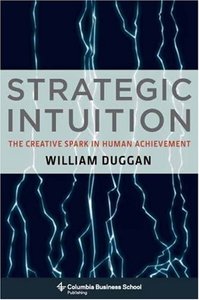 Source of book image:
Source of book image:
http://ecx.images-amazon.com/images/I/51vovIVI5sL.jpg
(p. D16) One of the insights of “Strategic Intuition” is that business makes progress by following the opportunistic innovation model, while governments and international-aid agencies aim repetitively at rigid social goals. Such rigidity happens partly for a reason that Mr. Duggan is too polite to mention — bureaucrats, by nature, rarely give off a creative spark. Mr. Duggan prefers to emphasize a structural cause: The public demands solutions to problems of great social importance; thus bureaucrats get stuck with fixed objectives. Yet Mr. Duggan also shows that social progress often happens by emulating the opportunism of business. Among the most powerful of his examples is Muhammad Yunus’s invention of microcredit.
. . .
If there are still businessmen who feel compelled to follow a fixed-goal plan — missing out on the profits of opportunistic flexibility — then at least there is the free market to punish them. Market feedback is surely one big reason that we have so many innovative entrepreneurs. Where the old approach does most of the damage is in social policy, where the feedback is either fuzzy (as in domestic policy) or absent (foreign aid). Social policy could use a lot fewer commencement speakers and a lot more creative sparkers.
For the full review, see:
WILLIAM EASTERLY. “BOOKSHELF; Surprised by Opportunity.” The Wall Street Journal (Weds., November 14, 2007): D16.
(Note: ellipsis added.)
The reference to the Stratetic Intuition book is:
Duggan, William. Strategic Intuition: The Creative Spark in Human Achievement. New York: Columbia University Press, 2007.




